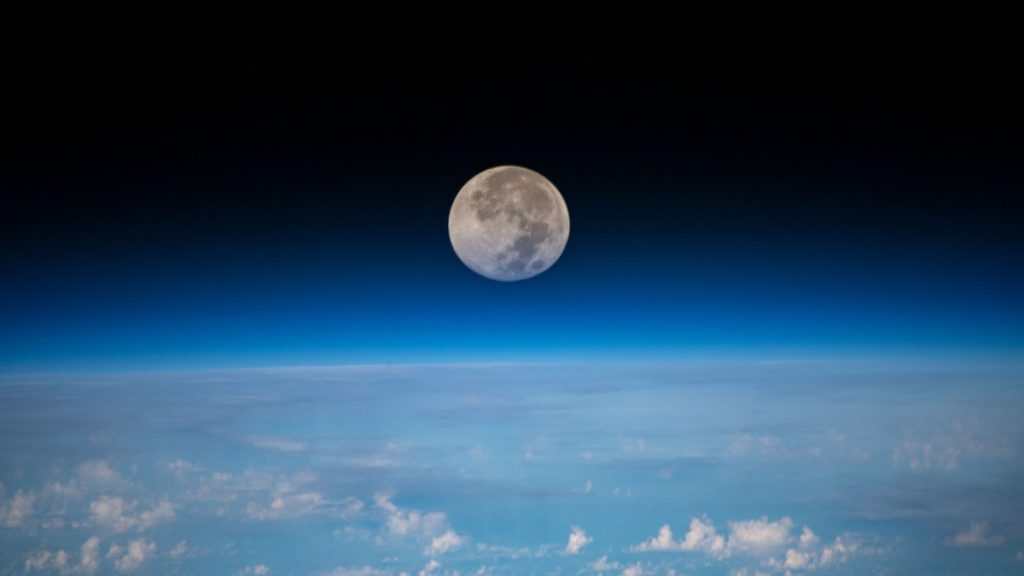
NASA finds Earth’s moon didn’t need hundreds of years to form. Try hours. (Image Credit: Mashable)
When the universe has seemed a vast, lonely place, people have taken comfort in Earth’s steadfast companion — the moon — ever-marching through space with this planet on an odyssey around the sun.
But at one time, some 4.5 billion years ago, the moon wasn’t around. And despite its being Earth’s cosmic bestie and closest neighbor, scientists still aren’t sure how it got there.
Since the 1980s, the leading theory has been that a massive planet, perhaps the size of Mars, crashed into Earth billions of years ago, spattering a world’s worth of gas, magma, and metals that forged the moon over tens to hundreds of years. A study published Tuesday in The Astrophysical Journal Letters suggests a bold new idea: The moon could have formed in one swift exchange, with a large chunk of baby Earth and its impactor’s material blown into a wide orbit — in a matter of hours.
If true, the research, which centered on hundreds of extremely high-resolution computer simulations of such a collision, could help resolve a longstanding head-scratcher for scientists about why the lunar crust seems so darn similar to Earth. It also provides potential answers to why the moon is tilted and has a thin outer layer. Cosmologists yearn to piece together what happened not only to flesh out the moon’s origin story, but explain a defining moment in Earth’s evolution.
NASA and collaborators put together a quick two-minute animation that attempts to show how the new model would unfold. A planet, which scientists have dubbed “Theia” over the decades, whacks a primitive version of Earth like a paint ball, casting off a mixture of planetary guts. Rather than forming a thin disk of debris, though, it divides into another blob, yo-yoing material between them. The gravity of Earth hurls the smaller body onward, but it survives. The umbilical severs.
This dance of destruction is contrasted by a musical score of lullaby-like plinking on a marimba.
“I’ve always thought it would be great to actually have some, as it were, real sound effects, getting some explosions in there,” Jacob Kegerreis, lead author on the paper and a postdoctoral researcher at NASA Ames Research Center in California, joked with Mashable.
“I’ve always thought it would be great to actually have some, as it were, real sound effects, getting some explosions in there.”
Scientists have run computer models of the giant impact in lower resolution for years, without two bodies splitting apart. In this case, NASA teamed up with Durham University’s Institute of Computational Cosmology in England to perform simulations that were up to 1,000 times higher resolution than the standard, testing and observing different crash angles, speeds, planet spins, and sizes.
What emerged from the boosted computing power were behaviors that weren’t seen in previous research. And when there was some earlier, sparing evidence of a crash that could split into two blobs, researchers doubted the result as a numerical problem with their model, Kegerreis said.
This new model uses hundreds of millions of tiny particles to represent the planet bits. In theory, if they can describe how those materials interact through gravity, pressure, and heat, the system should behave accurately, he said.
Kegerreis explains the concept with an analogy of dropping a ball to break it apart.
“If you build that ball out of little Lego pieces and you only have 50 of them, it might just split perfectly in an unrealistic way,” he said. “But if you have thousands or millions of them, you might start to find the way that it actually fragments in a more realistic way, and it’s that same kind of idea.”
Want more science and tech news delivered straight to your inbox? Sign up for Mashable’s Top Stories newsletter today.
About a decade ago, scientists scrutinized the giant-impact theory over a chemical controversy. Researchers analyzing Apollo moon samples in the 21st century had found that the lunar rocks had the same chemical signature as Earth’s mantle, yet Mars meteorites and objects from other parts of the solar system have different compositions. That would suggest non-Earth sources should look pretty different.
How, then, could the moon be made of an amalgam of the Earth and a mystery planet with no traces of otherworldly chemical signatures, they’ve wondered?
Scientists continue to debate the issue. Meanwhile, the new NASA computer simulation has the advantage of resulting in a moon made from mostly Earth stock.
Understanding the composition of the moon isn’t easy, in part because scientists are basing their knowledge on a small collection of rocks from a tiny area near the moon’s equator. NASA scientists look forward to the Artemis moon-landing missions that will explore an entirely different region to gather more data, including samples mined from deeper within the moon.
What excites cosmologists like Kegerreis is how the study opens up new options to consider how the moon formed.
“On the one hand, [these events] are absolutely very violent and somewhat disruptive, but they’re also highly constructive,” he said, adding that there were likely other important collisions before Theia. “We’re certainly lucky that they aren’t happening frequently nowadays, but they were a key part in leading the Earth toward its habitable state today.”





